Last update: 2025-06-22
Basic Sound Physics
If you want to work with sound, you should understand some basic sound physics to know what you're doing. This is a short introduction covering the fundamental concepts you need to work with sound.
Index
Sound starts as a simple idea but grows into a vast field of study. So, let's begin at the start and answer this question:
What is sound?
We could define sound in just three words: sound is a mechanical wave with longitudinal propagation. Let's explore these three terms to fully understand what that means.
What is a wave?
A wave is a disturbance, typically described as a vibration, that propagates through space and time.
Depending on the nature of the disturbance, there are different types of waves. Our definition says that sound is a mechanical wave, so...
What is a mechanical wave?
There are different types of waves found in nature:
- Electromagnetic: a disturbance in the electromagnetic field. Human eyes can detect a portion of these waves, known as visible light.
- Gravitational: their existence was predicted long ago, and now it's confirmed—although we’re still experimenting and learning about them!
- Mechanical waves: waves that propagate through matter, such as molecules and atoms. Sound is a vibration of matter, so it is a mechanical wave.
You’re probably already familiar with some mechanical waves, like ocean waves! They're mechanical too, but their propagation is not longitudinal like sound.
What is a longitudinal wave?
Depending on their direction of propagation, waves can be:
-
Rotational: the vibration is both perpendicular to and aligned with the wave's direction of propagation, creating a circular motion (like ocean waves near the shore):

Wikimedia Commons image by user Kraaiennest
-
Transverse: the vibration is perpendicular to the direction of wave propagation (like deep-sea ocean waves or electromagnetic waves/light):

Wikimedia Commons image by user Christophe Dang Ngoc Chan (cdang)
-
Longitudinal: the vibration occurs in the same direction as the wave propagates. Sound vibrates in the same direction it travels, making it a longitudinal wave.

Wikimedia Commons image by user Christophe Dang Ngoc Chan (cdang)
Sound Propagation
This is a good representation of how sound propagates:
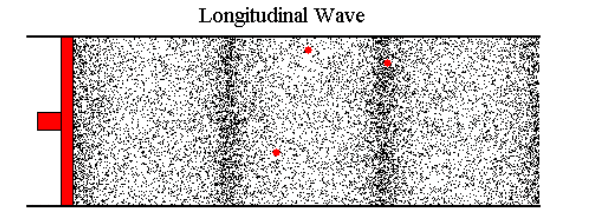
Southampton University image, author unknown
In this animation, we can see how each particle—either an atom or a molecule—moves back and forth while the wave travels through the medium, passing the disturbance on to its neighbors.
One important thing to understand is that particles do NOT travel with the wave; they simply vibrate around an equilibrium point. What actually moves through the medium is the disturbance—specifically, the change in pressure.
Three red particles are highlighted in this example so you can more easily follow their motion.
Playing with Waves
The best way to learn is by experimenting! Here's a small app that lets you interact with a simulated wave. Use the Play/Pause button to start or stop the simulation, and adjust the parameters to explore how different factors affect the wave.
Pay attention to the sliders—these let us explore the following features:
- Amplitude: this represents the strength of the disturbance. The greater the amplitude, the more significant the pressure variations in the medium—and the louder the sound. Zones of lower and higher pressure are called rarefaction and compression, respectively. While it's not critical to remember these terms, they're useful to know. In this simulation, you can see how pressure changes travel in the Longitudinal Wave section.
- Frequency: this is the number of full oscillations per second. Humans can typically hear frequencies between 20 and 20,000 oscillations per second, but this range can diminish with age or hearing damage. The unit of frequency is s-1, but in sound we usually use the alias Hertz, abbreviated as Hz. We perceive lower frequencies as bass tones and higher frequencies as treble tones.
- Equilibrium positions: you can also set an equilibrium point to see how particles vibrate around it. This helps reinforce the concept of vibration versus displacement.
Wave Behavior
All waves exhibit common behaviors, and sound is no exception. Let’s take a look at some of the key wave behaviors that help us understand how sound works.
Attenuation
Sound waves of different frequencies lose energy as they propagate. This overall drop in volume follows the inverse square law: doubling the distance from the source decreases the sound pressure by a factor of four. However, not all frequencies decay at the same rate. Higher frequency waves lose energy faster, creating a natural low-pass filtering effect—sounds nearby retain more high-frequency detail, while distant sounds appear duller.
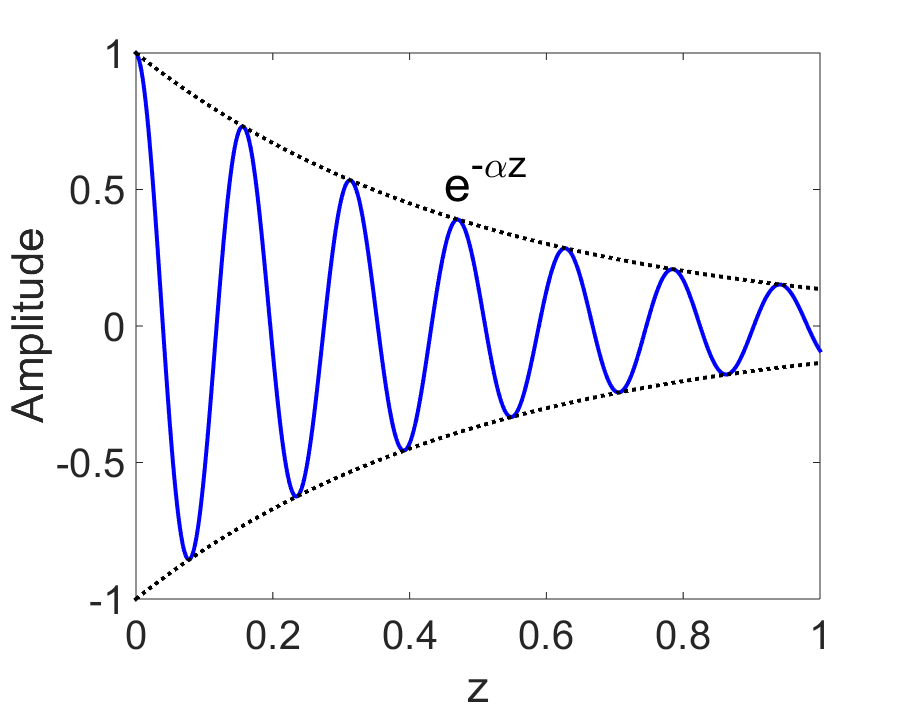
Image by GeoSci Developers, CC BY-SA 4.0
Reflection
The reflection of sound is similar to the reflection of light. When a sound wave encounters a boundary between materials—such as a wall—part of the wave is reflected back into the original medium. These reflections bounce off at an angle. A single, distinct reflection is often referred to as an echo.

ExplainThatStuff image by Chris Woodford
Reverberation
Pure, isolated reflections are rare in real life; they require a single obstacle in an open space. In most indoor environments, sound reflects off multiple surfaces—walls, ceilings, furniture—creating a dense collection of reflections called reverberation or reverb. Reverberation varies depending on the room and the source's position within it.

Skimel (original author: Saendie), CC BY-SA 4.0, via Wikimedia Commons
We can divide reverb into two components:
- Early reflections: These are the first few reflections that arrive shortly after the direct sound (within 80–100 ms). They help us perceive the size of the room and the spatial relationship between the sound source and the listener.
- Reverberant field or late reverb: This is the complex mixture of subsequent reflections that continue to bounce around until they lose energy.
Absorption
Sound absorption occurs when waves enter a material and some of their energy is lost inside it. When a wave passes through a wall, for example, part of it reflects internally and part of it transmits through. The transmitted wave typically has less energy—especially at certain frequencies.
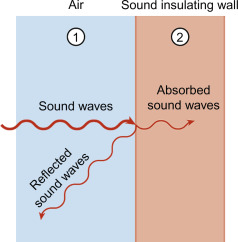
Anshuman Shrivastava, CC BY-SA 4.0, via ScienceDirect
Diffraction
Diffraction is the bending of sound waves around obstacles, such as walls or doors. You might notice that in a closed room with an open door, you can still hear sounds coming from outside—especially near the door—despite not seeing the source. This becomes important when discussing obstruction: a case where the direct path from source to listener is significantly weaker than alternative diffracted paths.
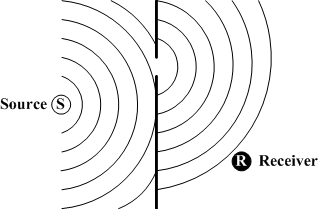
Yggmcgill, CC BY-SA 3.0, via Wikimedia Commons
On the other hand, we have occlusion, where all paths from a sound source to the listener are blocked. In this case, the sound is heard as heavily filtered and attenuated, primarily due to absorption.
Interference
When sound waves from different sources meet at a single point, they combine to form a new wave. This process is called interference. It’s the same principle that occurs when mixing sounds in audio software. Depending on the frequencies and phases involved, interference can be:
- Constructive interference: The resulting wave has a greater amplitude.
MikeRun, CC BY-SA 3.0, via Wikimedia Commons
- Destructive interference: The resulting wave has a smaller amplitude.
MikeRun, CC BY-SA 3.0, via Wikimedia Commons
When two waves have the same amplitude but opposite phases, they cancel each other out completely—this is called phase cancellation.
Doppler Effect
The Doppler Effect is the change in perceived frequency of a sound due to the relative motion between the sound source and the listener. If the source moves toward the listener, the sound waves compress and the pitch appears higher. If the source moves away, the waves stretch out and the pitch appears lower.
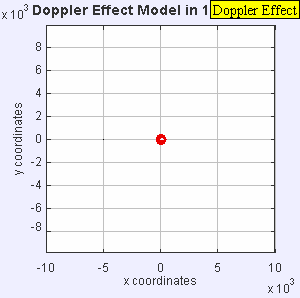
Lookang, CC BY-SA 3.0, via Wikimedia Commons
Conclusion
If we want to recreate realistic acoustic behavior for an immersive experience, we first need to understand how sound behaves in real environments. Even when aiming for a not so realistic sound, some of its properties will be probably useful. Depending on the specific use case, we might prioritize different behaviors in our simulations or designs while discarding others to get the feeling we want to convey.

